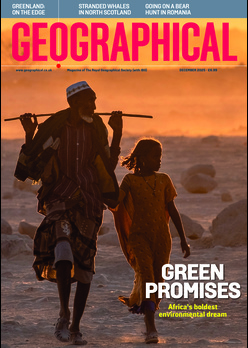
Doug Specht examines the marked change in how French media are reporting on extreme weather within the country
This summer, French viewers have tuned in to see their national news bulletins open not with stories of politics or international drama, but with helicopter footage of wildfires racing through the pine forests of the Midi.
The scenes were harrowing: plumes of smoke billowing above the landscape, hamlets evacuated in haste, firefighters combating flames in relentless heat. Yet, what stood out as much as the imagery was the language used by the news anchors.
They spoke of le dérèglement climatique (climate disruption) as the context, not just the backdrop, to this summer’s emergencies. In France, the way the media covers extreme weather is changing, and with it, the national conversation on climate and geography is taking on new dimensions.
From occasional story to national priority
It was not always so. Only a few years ago, climate-related incidents were often relegated to brief local segments or treated as unconnected, anomalous disasters. A deadly heatwave in Marseille or a flash flood near Nice might attract a few days’ attention, only to fade into the background as the news cycle moved on. However, the pattern of recent summers, marked by record-breaking temperatures, protracted droughts, and fierce wildfires, has forced newsrooms across France to recognise that these phenomena are not isolated.
Enjoying this article? Check out our related reads:
What is perhaps most striking about this transformation is the editorial decision to name climate change directly in coverage of extreme weather. No longer are such stories framed as freak occurrences or acts of nature devoid of context.
Journalists and news editors are explicitly drawing connections between the increase in frequency and intensity of heatwaves, wildfires, and flooding, and the well-documented effects of global warming.
An analysis by Carbon Brief and other observers has shown a clear shift in headline language from canicule exceptionnelle (exceptional heatwave) to symptôme du changement climatique (symptom of climate change). This change is not just semantic. By moving environmental stories from the margins to the mainstream, French media outlets are ensuring the public sees these events not as isolated, but as part of a systemic pattern, one with both causes and possible solutions.
Regional media’s role
While national outlets help set the tone for public discussion, it is France’s regional press and broadcasters that often provide the most vivid storytelling and deepest understanding of place. Newspapers like La Dépêche du Midi or Corse-Matin, and regional affiliates of France 3, are embedded within the communities most affected by climate extremes. Their journalists report firsthand on the encroachment of fire lines, the loss of family farms to drought, or towns battered by rivers.
What sets these stories apart is their geographical nuance. They capture the specificity of local impact and the voices of ordinary people navigating extraordinary change.
A further change is the embrace of storytelling that elevates not only the drama of disaster, but the ingenuity of adaptation and resilience. French media now make space for scientists explaining the mechanisms of climate change and for the farmers, mayors, and residents experimenting with new ways to mitigate impact.
There are profiles of communities reforesting after infernos, citizen collectives deploying volunteers to clear brush or protect the elderly from heat stress, and engineers designing new flood defences. By shifting some of the narrative focus to adaptation and action, the press fosters a sense of agency and hope, without denying the scale of the challenges ahead.
Continued challenges
As the complexity and frequency of environmental crises have grown, French media has embraced new tools and formats to bring these realities home. There has been a marked increase in the use of graphics, satellite imagery, and interactive maps. Viewers and readers are shown the rapid advance of fire fronts, the shrinking surface of glaciers, or time-lapse sequences of rivers flooding urban streets.
Digital data dashboards allow audiences to track daily temperature anomalies or air quality indices. These visual techniques not only make environmental change more tangible, they also help overcome climate “invisibility”, turning abstract trends into lived experience.
However, the transformation in coverage is not without its challenges and blind spots. Some rural regions, for instance, remain ‘news deserts’ in which local impacts are underreported, while Parisian or southern urban areas dominate the headlines. There is also the threat of climate fatigue; overexposure to crisis reporting can lead to despair or disengagement.
Meanwhile, disinformation and politicisation occasionally cloud the clarity of public debate, as do commercial pressures that favour sensational stories over slow-burning environmental issues. Environmental journalists themselves face growing risks: a recent UNESCO report highlighted attacks and intimidation of reporters covering environmental topics in France and beyond.
Despite these challenges, the French media have redefined how they report extreme weather and climate change. What was once rarely covered or treated as disconnected occurrences is now understood and presented as the defining story of our time. France’s journey in environmental reporting offers not just a window into one country’s response to the climate crisis, but a model for how media can inform and inspire change in a warming world.




